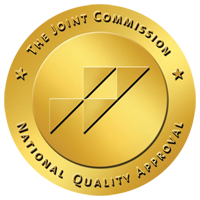Inpatient treatment is one option for those struggling with substance abuse. It is the most structured and guided as the patient lives at a facility for 24/7 supervision. Since all triggers and stimuli are removed from the situation, it offers extra support to those dedicated to their recovery. If you or a loved one is considering inpatient rehab, then you should know that the initiation phase can be the most challenging.
During the first week, it’s normal to feel lonely and anxious. You’ve been uprooted from your routines and your household. In the process, you’re meeting new people and trying to navigate this new normal for the imminent future. While it can be overwhelming, being prepared can ease any anxieties and help you get the very most out of the program.
Here is a rundown of what to expect, how to prepare for this initial week, and the key steps to help your recovery.
Preparing for Admission
Setting yourself up for success starts before you enter the facility. You’ll want to ask your care team for a list of items they suggest you bring as well as others that are best left at home.
Most importantly, you’ll need to bring certain forms of identification. This typically includes a driver’s license, passport, or other form of identification. If your healthcare insurance is covering part or all of your treatment, make sure you have any forms or healthcare cards on hand as well. Any necessary medical records as well as notes from a doctor for any needed prescriptions should also be packed.
Make sure to pack plenty of clothing options as well. Most of the time, you’ll be sitting in meetings and receiving treatments so casual, comfy clothes are suggested.
In terms of toiletry items, some facilities may have restrictions for alcohol-free items only. Mouthwash, for example, may be a prohibited item as well as nail polish remover. You’ll want to bring enough to last a minimum of 30 days, knowing that visiting family members or friends can restock these necessities if needed.
Outside of these basic items, you may also want to bring some miscellaneous items that will bring you joy. A Kindle, laptop, photos of loved ones, and your favorite pillow can help make you feel more at home. Depending on the facility, video games may not be allowed.
In terms of preparing for admission from an emotional point of view, it can be helpful to let your inner circle know what you are doing. Their support can give you the extra motivation and guidance you need to have a successful first week.
The Intake Process
Your recovery journey starts the moment you check yourself into the facility. The intake process will likely include an interview or questionnaire with a care team member. This is to help everyone on staff know you better and provide the level of support you need to complete the program.
Depending on your level of substance abuse, it may also include a medical and psychological assessment. This is the baseline, or where you are beginning. Don’t feel embarrassed or afraid to answer any question incorrectly. The more they know where you are, the better they can help you.
During this intake process, you’ll discuss your treatment goals. Think of this as the end goal. Imagine yourself checking out of the treatment. What will you have accomplished and how will you feel walking out of these doors on your own? It can be helpful to think about your future self to truly know what you want to get out of the program.
With all of this information, the staff will begin to form a personalized treatment plan. This is your roadmap throughout the program. It is meant to guide you to success, however, note that it can be altered. If something isn’t working for you, you can talk with the staff to let you know how you’re feeling and ask for additional solutions.
Detoxification and Medical Stabilization
The body of someone with substance abuse disorder has become dependent on the substance. Whether it is alcohol, drugs, or prescription pills, the body has learned to depend on these substances to function. A medical detox is often the first step in the addiction treatment process and can typically last anywhere from three to five days.
A medical detox needs to be completed with the help of medical staff in a supervised facility. Doctors can provide needed medications to help the body properly — and safely — free itself from these items.
During the detox part of the program, you may experience withdrawal symptoms. This can include nausea, anxiety, insomnia, muscle cramps, diarrhea, vomiting, and others. Detoxing will not be easy, but again think of it as freeing yourself from the chains of the substances.
As you are detoxing, you’ll be medically stabilized via vital sign monitoring. Your labs will be taken regularly to see how your body is responding to the detox. Your physical health will be evaluated to see how both the physical body and the mental state are reacting to the process. If needed, medical staff will provide you with supplementation and therapy to best support you during this time.
Daily Schedule and Routine
After the detox is complete, you’ll be given a daily schedule to follow. The exact schedule will vary from person to person. That said, the morning will likely begin with a nourishing breakfast and early meetings. You can expect to be woken up early to get a start on the day. Some programs may offer classes such as yoga or meditation to begin your day with a fresh mind and body.
You may have a group session in the morning or a meeting with a therapist or counselor related to the treatment you’re receiving. After lunch, you may expect to have additional group sessions or be brought into different therapeutic sessions. These include:
- Individual counseling
- Group therapy
- Family therapy
Other ad-hoc meetings such as educational workshops may also be added to your weekly schedule. These tailored sessions may be optional but recommended by your counselor based on your individual needs. Sessions may be geared toward different populations such as veterans, members of the LGBTQ+ community, and young adults.
Emotional and Psychological Challenges
It’s common to be feeling all the feels during your rehab treatment. Some of the most common emotional experiences include anxiety, guilt, shame, and worthlessness. On top of this, you may also experience loneliness and sadness for the life that you were living.
Know that these emotional feelings are all part of the healing journey. At the same time, treatment is meant to support you from both a physical as well as a mental perspective. Seeking out extra support and finding a network of other inpatient residents can be helpful. Sharing shared experiences and feelings can help you feel like you truly aren’t alone.
It may also be helpful to keep a journey throughout your stay. Writing down your thoughts, even if it is just a few sentences every day, can allow you to reflect on what you’re overcoming. It can be a tangible reminder that you are putting in the hard work and that it will all be worth it in the end.
Treatment Modalities
Substance abuse disorder is different for every person. Because of this, the medical staff and care team may explore using a variety of treatment modalities during your program.
- Cognitive behavioral therapy (CBT): This is a type of psychotherapy that involves one-on-one sessions with a trained mental health expert. The goal is to retrain your negative thoughts and behaviors through goal-oriented actions and steps.
- Dialectical behavior therapy (DBT): This is a type of CBT that focuses on behavioral skills. With this type of therapy, you’ll learn the tools you need to manage your emotions and build certain skills, including mindfulness, distress tolerance, emotional regulation, and interpersonal effectiveness.
- Motivational interviewing: This counseling method is designed to incentivize patients to change their behaviors. It can be especially useful for those with substance abuse disorder who feel unmotivated or unready to change.
- Trauma-informed care (TIC): The purpose of this modality is to understand, recognize, and respond to the effects of trauma. By creating a safe space, patients feel supported to talk about the trauma and learn ways to respond to it.
- Holistic approaches: Other modalities such as physical exercise, meditation, nutritional services, and spiritual services may also be implemented to supplement the above treatment and care options.
Building Coping Skills
While you’ll be receiving all the guided support you need during inpatient treatment, learning how to cope on your own is also essential to the healing journey. Throughout the program, you’ll learn about different coping skills to help you best prepare for your success outside of the facility.
These may include stress management and emotional regulation techniques such as deep breathing or tapping. Knowing and understanding your triggers will also be important to best manage them and prevent a relapse from occurring. Communication skills to explain what you need and when will also be important, particularly in the early days after leaving the facility.
Family and Social Dynamics
Another component of treatment is understanding how to let your loved ones into the process. Even if you have a supportive group at home waiting for you, they may not know how to best handle your re-entry. Some programs offer classes for families to take alongside your program so they have a sense of what you’re going through and how to show up in the best way possible.
During your stay, your family and friends may choose to come visit you. Check with the facility ahead of time and let your loved ones know what your expectations are.
While it may be nice to see a familiar face during your treatment, it can also make it more challenging afterward. Seeing them may bring you back to your old life and can stir up a lot of emotional feelings and potential triggers. If you feel this happening, talk with your counselor about how to best handle these situations to prepare for your return after the program.
Aftercare Planning
Even before you’ve started your treatment, it’s good to know what to expect on the other side. Aftercare planning includes transitional strategies so you can return to your home and still feel supported along the way. It also includes knowing what types of continual care are available to you, such as outpatient services or continued one-on-one therapy sessions.
Other support groups may also be made available. These can be helpful for those with a substance abuse disorder past to find commonalities and share what has helped to stay sober and substance-free outside of the treatment facility.
Conclusion
While the first week of inpatient substance abuse treatment will be difficult, it is the very beginning of your new life. You are taking the first steps to a life free of substance abuse disorder, unchaining yourself from the dangers of alcohol and/or drugs.
Pathways Real Life Recovery offers a range of services to suit your needs. We offer tailored substance abuse treatment programs that are customized to each patient’s unique journey. Call 801-895-3006 to speak with a caring advisor who can walk you through your treatment options and explain more about inpatient rehab treatment, or contact us here.
Disclaimer: This blog post is for informational purposes only and should not be considered medical advice. Always consult with a qualified healthcare professional for personalized guidance.


